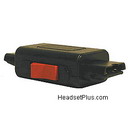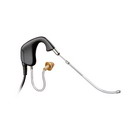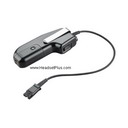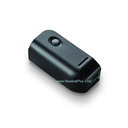|
*Discontinued* Replaced by the new Plantronics CA12CD-S Plantronics CA12CD is a cordless PTT (push-to-talk) 6-wire headset adapter designed to provide wireless encrypted communications and PTT functionality for applications such as Public Safety Dispatch and Air Traffic Control. Key Features:
APPLICATIONS:
Base Unit:
Remote Unit:
Additional CA12CD accessories: Plantronics CA10CD, CA12CD Console Interface Cable Plantronics CA12CD replacement remote unit Plantronics CA12CD AC/DC Wall Adapter Plantronics CA12CD USB Adapter SSP2468-01
For more information and specs see Plantronics CA12CD datasheet and CA12CD product summery sheet
important: see How to set CA12Cd audio levels
Also see our Headsets for Dispatch, Emergency or Air traffic control FAQ page note: Regarding Plantronics CA12CD RF Power Output The maximum RF power output for both the base and the remote it is +4dBm. It is recommended by Plantronics to have the bases at least 8-10 feet apart from each other for best results. In the US, the UPCS frequency spectrum (1.92mHZ to 1.93mHz) has been allocated by the FCC for use by unlicensed personal communications devices. The FCC, on the other hand, has NOT allocated the DECT frequency spectrum (1.88mHz to 1.90mHz) for this use. As a result, the DECT frequency spectrum cannot be used in the US for unlicensed personal communication devices because their operation can interfere with, with other RF devices operating within this spectrum. |
 Manufacturer Info • Poly (Plantronics) Homepage • Other products |
| Extra Info This product was added to our catalog on Wednesday 11 October, 2006. Notify me of updates to Plantronics CA12CD PTT Wireless Amplifier/Adapter *Discontinued* Tell someone you know about this product. |















